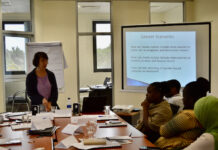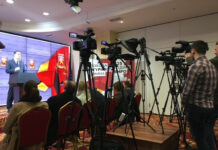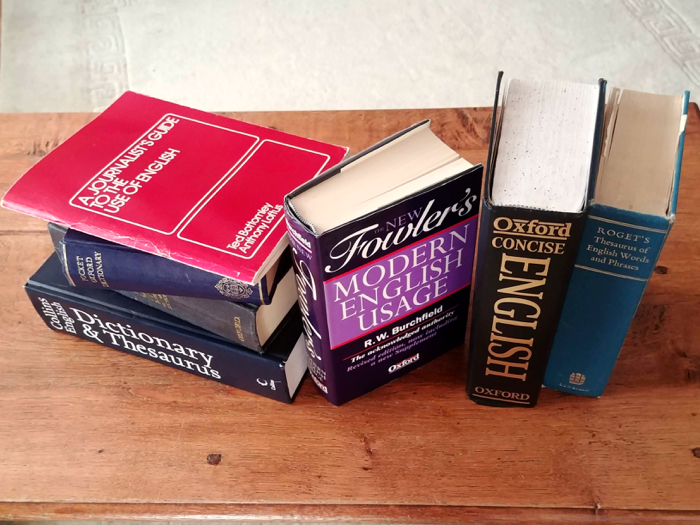
The bridge between one mind and another
Chapter 1 from the book ‘A journalist’s guide to the use of English’
ENGLISH IS ONE OF THE MOST EXPRESSIVE AND flexible languages in the world. Its immense vocabulary provides for the persuasive and precise communication of ideas. It is a language of subtle verbal inflections, which enable the writer to project mood and emotion, to formulate thought and principle with clarity and impact, and to range fluently through a wide variety of styles from the lyrical to the prosaic.
Few other languages can rival the scope of English, whether the subject is an abstruse concept, a poetic aspiration, an evocative piece of word painting or straightforward reporting in simple prose. But, above all, English is a language which communicates thought processes with precision and logic. It is the bridge between one mind and another: the means of sharing ideas; of keeping an individual, his or her family and the whole community informed.
We are in the communications business with the specific aim of building that bridge between writer and reader, so that we can inform, influence and, at times, entertain. But we must remember that communication begins only when the reader understands what he or she is reading. In building this communications bridge, therefore, we must do as the engineer does, starting from both sides of the gap simultaneously and meeting half-way.
The writer meets the reader half-way by using language which the reader understands, by drawing on material within an individual range of experience and by stimulating enough interest so that he or she wishes to read on. The writer builds the bridge, but it is the reader who must cross it if there is to be any communication. For communication is understanding and is accomplished only by the percipient.
All too often, however, the reader never gets across the bridge, not because of any lack of desire, but because, quite simply, the bridge has fallen away! This happens when the bridge is badly designed; when shoddy materials are used; when the very nuts and bolts don’t fit or are in the wrong place.
If language is a communications bridge, then words and phrases are the nuts and bolts of that bridge, and they must fit, they must be used in the right way and they must not be worn out through over-exposure. These nuts and bolts are the materials of our craft: words are our business. And these words must be fitted together with the skill and precision of a craftsman.
The reader must always come first. However much pride we take in our verbal skill and our sense of style, we must remember that we are not building a bridge for the writer to cross, but for the reader.
We write for a readership whose interest needs to be stimulated. This does not mean that we need to “write down” to the reader, but it does mean using English as the incisive instrument it is. Well chosen words can expose, can penetrate, can clarify. They can create a ready understanding of complicated ideas and can accurately and vividly evoke the pace and mood of any action they are recalling.
The good reporter is the one who is in the right place at the right time and who has the right word ready. Within the rich vocabulary of the English language, he or she has an abundant stock from which to choose. But the reporter must choose carefully; flair is no substitute for care.
Clarity, accuracy and simplicity
OUR primary aim in presenting news must be clarity and accuracy; and a simplicity of style which conveys meaning quickly and with an impact which compels the reader’s attention. And this can be achieved only when words do the work for which they were designed; when the writer resists the temptation to distort and misuse language for the sake of immediate effect. Glibness is not enough.
However, this is not to say that a sophisticated use of words has no place in our writing. Clearly the style will vary with the subject and treatment of it. Some news stories may be written in a light vein; others demand a hard, factual, no-nonsense approach. The same is true of features or comment pieces. The style will vary according to the material but in all these vehicles directness, clarity and accuracy are essential. And brevity remains a virtue: do not fall into the trap of thinking that “in depth” means “at length”.
There is no such thing as newspaper English; there is good English and bad English, and there is a variety of styles which may be suitable in different contexts.
Suitability is the key word. The journalist should be able to make the style match the mood of the subject. This means developing a professional polish in order that the gifts of a writer are placed firmly at the service of the reader.
Revised by John Bottomley – 2020
About this training module
Ted Bottomley and Anthony Loftus were both journalists and training managers at the Express & Star group of newspapers in the UK. The group has given this site permission to publish the module (above), which is one of six taken from the book ‘A journalist’s guide to the use of English’, first published in July 1971 but still relevant today. You can find links to all six chapters below.
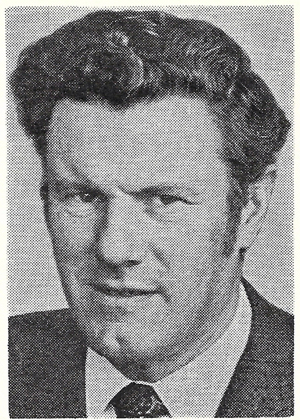 Ted Bottomley spent his whole working life in newspapers and more than 25 years in journalism. He was a former weekly newspaper editor, and had a long association with the National Council for the Training of Journalists. He was a member of the Publishing and Editorial Training Committee of the Printing & Publishing Industry Training Board. In the UK journalists still compete to try to win the prestigious ‘Ted Bottomley Award’.
Ted Bottomley spent his whole working life in newspapers and more than 25 years in journalism. He was a former weekly newspaper editor, and had a long association with the National Council for the Training of Journalists. He was a member of the Publishing and Editorial Training Committee of the Printing & Publishing Industry Training Board. In the UK journalists still compete to try to win the prestigious ‘Ted Bottomley Award’.
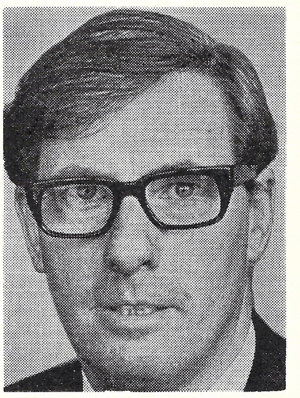 Anthony Loftus was a high court reporter and film and music critic before becoming the Editorial Training Officer of the Express & Star group. He was a member of the Institution of Training Officers and the Association of Lecturers in Journalism, and the chair of the West Midlands Regional Training Committee of the National Council for the Training of Journalists.
Anthony Loftus was a high court reporter and film and music critic before becoming the Editorial Training Officer of the Express & Star group. He was a member of the Institution of Training Officers and the Association of Lecturers in Journalism, and the chair of the West Midlands Regional Training Committee of the National Council for the Training of Journalists.
You can read more about the book, the men behind it, and how it has been revised and updated by Ted Bottomley’s son, John, a newspaper journalist for 40 years.
The six chapters of ‘A journalist’s guide to the use of English’
- Chapter 1: The use of English
- Chapter 2: The essence of style
- Chapter 3: Word Power
- Chapter 4: Spelling
- Chapter 5: Syntax and sentence construction
- Chapter 6: Punctuation




